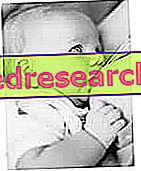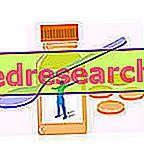Edited by Eugenio Ciuccetti, Obstetrician
Importance of Breast Training
After birth, the first crucial step to guarantee a healthy development for our child is certainly to ensure that he is breastfeeding correctly and continuously.

Benefits and Benefits
Breast milk is without a doubt the best possible milk that a woman can offer her baby. As with all mammals, on the other hand, even the human one is a species-specific milk.
This means that the mother's milk will be, for her child, the most complete from a nutritional point of view. And not only. It will also be the most suitable from the immune point of view, protecting the offspring from allergies and infections. And again, breast milk costs nothing and, under physiological conditions, is always available.
Benefits for the Child
Breast milk is the best food for the baby:
- it feeds him completely
- protects it against respiratory infections and asthma
- reduces the risk of diabetes
- protects it from many infections; in fact, breast milk contains antibodies that fight enteritis, ear infections, respiratory and urinary infections. Not surprisingly, the frequency of these infections is higher in children fed artificial milk.
But the benefits of breastfeeding do not end there. For example, the deep emotional bond and mutual recognition that is established in this way between mother and child is not guaranteed - but rather compromised - by the artificial mediation of any bottle.
In this perspective, it is essential that the mother can breastfeed her baby from the very first moments of life. There will be time for the bath and for everything else. The first thing, however, is the woman's magical contact with her child. A relationship built for nine months inside the belly and now ready to renew itself in the physical meeting of the two bodies.
The newborn, welcomed by the mother's womb, is heated, cared for, nourished and protected. In turn, stimulation of the nipple will help the mother's breast to prepare for the milky whipping and will circulate the hormones necessary to promote the necessary uterine involution (such as oxytocin).
Benefits for the mother
Breastfeeding:
- Helps lose weight accumulated during pregnancy
- Reduces the risk of developing osteoporosis
- Prevents some forms of breast and ovarian cancer
- It's free
- It's practical
In short, it is a reciprocal relationship of encounter and exchange that must continue, exclusively, for at least 6 months.
Disadvantages of non-breastfeeding
According to reports from the WHO and UNICEF, on the other hand, failure to breastfeed, and in particular the lack of exclusive breastfeeding during the first six months of life, are important risk factors and can cause greater mortality and propensity to get sick in infants and children, as well as greater difficulty in school activities, lower productivity and diminished intellectual and social development.
How to breastfeed
See the in-depth article on feedings: ideal position of the baby, attachment to the nipple, frequency of feedings, quantity of milk.

Promotion
These then some of the main strategies suggested to promote breastfeeding:
- mothers' training activities especially during birth preparation courses and gynecological visits; professional updating of social and health personnel; awareness raising in schools.
- Provide assistance to mothers in order to start breastfeeding as soon as possible, when mother and baby are ready, without interfering.
- Demonstrate to mothers practically the correct breastfeeding methods and teach strategies to maintain lactation in case of temporary separation from the child.
- Encourage breastfeeding on demand.
- Avoid the administration of other foods or beverages outside of the mother's milk, unless medically indicated.
- Discourage the use of artificial teats, baby bottles or pacifiers.
- Encourage wider dissemination of the "Friends of Children" initiative, encourage rooming-in and encourage breastfeeding on demand.
- Provide support to mothers and their children, after hospital discharge, through home visits by family health care consultants, visits of other mothers with experience and appropriate training on breastfeeding, participation in support groups, etc.
- Periodically verify the prevalence of exclusive breastfeeding in the first six months and continued up to two years of age, and the factors that affect it.
- Verify the application of the Code for the marketing of breast-milk substitutes and the subsequent relevant resolutions of the World Health Assembly.
 | Milk production, breast milk » |



